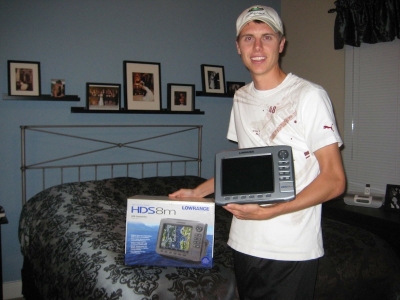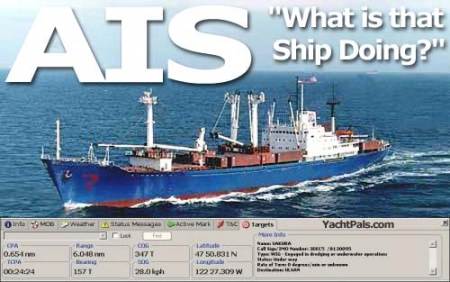Saturday, March 27th, 2010 /
Christie & Matt
As mentioned in an earlier post we’ve been taking classes offered by the Seven Seas Cruising Association‘s university “SSU“. Matt just wrapped up watching the recording of the free session “AIS”.
AIS, which stands for Automatic Identification System, is a standardized navigation safety system originally developed as a collision avoidance tool to enable vessels to electronically “see” each other in all conditions and improve the helmsman’s information about the surrounding environment. For vessels equipped with the system, AIS provides such information as vessel position, course, speed and navigational status (under way, at anchor, etc.), as well as its name and type (sail, power, tug, ferry, etc.).
While Matt already understood the basics of AIS and was planning on including the system in our navigation equipment refit, this class helped him make some final decisions on the right equipment and the right setup.
This course went into much greater detail (differences in AIS class types) but some noteworthy things we took away were:
- Receive/broadcast (Class A) AIS systems aren’t really worth it for small recreational vessels. Receive-only (Class B) is our best solution.
- VHF antenna splitters are not a good solution, it’s best to have a dedicated AIS antenna.
- VHF antennas can not be mounted closer than approx. 3 feet apart.
- And most importantly, no matter how advanced safety equipment is on board, it’s never an excuse to stop following basic safety protocols (like consistently scanning the horizon while sailing and maintaining active watches).
This is a fairly technical subject, if you’d like to know more we recommend further reading at Vesper Marine and GTS Consulting.
(Steven Gloor of GTS taught the SSU AIS class)







